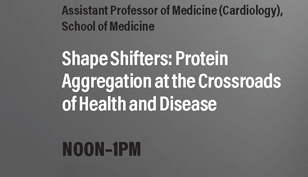    |
|
 |
|

*Unable to make it to Scaife Hall? Dr. Eisele’s lecture will be available via live stream to people with Pitt login credentials by clicking this link (sign in using your Pitt username and password): https://pitt.hosted.panopto.com/Panopto/Pages/Viewer.aspx?id=1cf4ed76-4a03-4bf2-a813-aa1800ed4bbb If you have problems with the video, contact the CSSD help line at 412-624-4357 (4-HELP).Topic Overview: Transthyretin amyloidoses are relatively rare amyloid diseases in which the protein transthyretin that is normally present in the blood forms amyloid deposits in the peripheral nervous system and/or in the heart and, rarely, in the blood vessels of the brain. Recently completed clinical trials have shown that disease progression can be slowed or even halted if either the physiological form of the transthyretin protein is stabilized by small molecule kinetic stabilizers or if transthyretin synthesis is down-regulated by gene-silencing strategies. Both approaches prevent transthyretin aggregation. Therefore, Eisele and colleagues were interested in delineating a structure-toxicity relationship for this disease. They discovered specific non-native transthyretin oligomers in the blood of patients with transthyretin amyloidosis, which correlate with disease status and decrease upon successful treatment. These transthyretin oligomers are now being evaluated for diagnostic purposes and as a response to therapy biomarkers. Interestingly, it appears that different subtypes of transthyretin oligomers exist that influence the phenotype of the disease. Thus, purely by changing their conformation, normal physiological proteins can turn into disease-causing agents, and the specific conformation determines disease phenotype and outcome. This reconfirms the notion that protein aggregation is central to the disease and can be targeted therapeutically. This finding also has far-reaching implications in the context of more common amyloid disorders, like Alzheimer’s disease, which Eisele will discuss.
|
 |
 |
|
    |
|